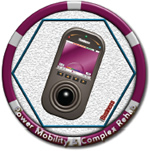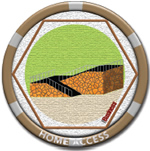2013: The Year Ahead
Big Ten
Our sixth annual look at 10 key trends, challenges and opportunites that will define the next 12 months for HME providers.
- By David Kopf
- Jan 01, 2013
Here we are again, at the start of the New Year, and another difficult-todivine 12 months of trends that will impact the HME industry. While it’s always a gamble trying to predict how the year will play out and which trends will factor into providers’ businesses, there are some sure bets. And for 2013, HME Business is putting its chips on the following 10 issues owners and management of HME provider business should be monitoring and planning for this year:
- Competitive Bidding
- MPP
- Audits
- Mobility/Complex Rehab
- Home Access
- Cash sales
- Software
- Oxygen
- Bariatrics
- Sleep
So, this being the sixth installment of our annual Big Ten list, let’s dive in and examine why and how providers should be planning for these issues and opportunities.
 Competitive Bidding Round Two
Competitive Bidding Round Two
Competitive bidding represents the biggest change the industry faces for the coming year, but it also represents the biggest change that might or might not happen. Depending on whether or not the industry can save itself from the Centers for Medicare and Medicaid Services’ bidding program via the Market Pricing Program (MPP; see “Market Pricing Program” to read more about the factors impacting that), competitive bidding Round Two will either recede into fading memory as the industry’s narrowly averted nightmare scenario, or it will be a grim new reality that will radically alter the HME landscape in negative ways.
As it stands, the industry and 240 economic experts including Nobel Laureates have told CMS, Congress and the President that competitive bidding is a bad system that will limit patient access while shuttering businesses. In Round One, which only covered nine competitive bid areas, approximately 400 provider businesses have closed. The Patient Protection and Affordable Care Act expanded Round Two to 91 competitive bid areas, essentially taking the program national for all intents and purposes. As for the timeline, bids closed back in March 2012; CMS was supposed to have released the Round Two bid amounts for Round Two by the time you read this (but as of press time had not done so); the bid winners get announced this spring; and the program is slated for implementation in July.
Of all the sure bets in terms of which factors will affect 2013, Round Two sits at the top. Of course the industry’s hope has been to stop the program, but if providers don’t accomplish that, then they are whistling past the graveyard. The onus is — and has been for some time — to develop and implement the sorts of business plans that will help ensure they can continue to survive and thrive if they lose an entire category of business. If providers can accomplish that, they just might have charted a course to “surthrival,” and if the industry is able to replace the program with the MPP, then they will have additional revenue streams in which to expand their businesses and better serve their patients.
 Market Pricing Program
Market Pricing Program
Speaking of bets, the industry is holding a pretty good hand in the fight against competitive bidding: The MPP. Leveraging the input of well-known competitive bidding critic University of Maryland Economics Professor Peter Cramton and his host of 240 auction theory and economic experts, the industry developed a bidding model that addresses multiple issues with competitive bidding, creates a system that is fair and doesn’t shutter businesses. Then the industry developed legislation to advance the MPP.
Rep. Tom Price (R-Ga.) introduced H.R. 6490, the Medicare DMEPOS Market Pricing Program Act of 2012, into the House in September 2012, and the bill would replace CMS’s competitive bidding program with the industry’s MPP. The bill proposes an auction model with some key industry-preserving features:
- Bids are binding for the bidders and cash deposits are required to ensure that only serious homecare providers participate.
- The bid price is based on the clearing price, not the median price of winners.
- The program includes the same equipment and services as the current bidding system and would be implemented across the country during the same timeframe. These categories are oxygen, standard power wheelchairs, manual wheelchairs, enteral nutrition, CPAP, hospital beds, walkers, diabetic supplies, negative pressure wound therapy and Group 2 support surfaces.
- Two product categories per market area would be bid. Eight additional product categories in that same area would have prices reduced based on auctions conducted simultaneously in comparable geographic areas.
Last month saw concentrated industry effort to increase support for H.R. 6490 during the Lame Duck session of Congress, which ended Jan. 1. The strategy was that Congress wouldn’t be able to truly address the “fiscal cliff” in its entirety, but it would work on related legislation that would most likely include the so-called “Doc Fix” to adjust physicians’ Medicare reimbursement. If so a Doc Fix would be the perfect legislation to which the industry could attach H.R. 6490.
How the industry’s strategy will have fared is up in the air at press time. As this is written, 80 lawmakers have co-sponsored the bill (read more in “News, Trends & Analysis,” page 8). If the industry succeeds, providers will all breathe a communal sigh of relief and begin building business strategies to operate under the new program once it is implemented. If not, then they will continue to wage the fight of their lives to somehow get H.R. 6490 passed before competitive bidding implementation, if that is indeed possible. No matter how the dice fall for the H.R. 6490, the MPP will clearly be a factor for the industry over the next 12 months.
 Audits
Audits
Even if competitive bidding goes away and the MPP is ushered in, providers still have other tough funding hands to play. At their fore is CMS’s ramped-up pre- and post-payment audit program. Audits represent an industry trend where the house seemingly always wins.
In the fiscal year of 2010, CMS invested $311 million in its program integrity, which was a 50 percent increase from 2009’s outlay. In 2011, providers felt the effect of that investment in a bad way. Claims dating back to October 2007 were subject to recoupment, and providers facing pre-payment audit could have 100 percent of their incoming claims reviewed before payment.
There are three main types of audits plaguing providers:
- Recovery Audit Contractor (RAC) audits are post-payment audits, which detect overpayments and underpayments for claims that go back three years from the date the claim was made, stopping at Oct. 1, 2007.
- Comprehensive Error Rate Testing (CERT), which are post-payment audits that randomly select a sample of approximately 120,000 submitted claims, and request medical records from providers who submitted the claims.
- Zone Program Integrity Contractor (ZPIC) audits, which are part of CMS’s Benefit Integrity Audits, are aggressive pre-payment audits that identify and prevent fraud, waste, and abuse of incoming claims. These can even result in the ZPIC auditors referring some cases to law enforcement agencies.
CMS estimated it would recover $10.4 billion in 2012, and crowed that fact to a Congress desperate to save any and all taxpayer dollars. It was a good story to tell until it became clear that the ramped up audit effort was absolutely flooring providers that couldn’t get out from under mounting audit documentation requests. Moreover, it started ringing hollow when providers were seeing as high as 60 percent of their audits being overturned when brought to appeal. This overturn rate points to poor process, and one of the many complaints about the way audit contractors are conducting the audits is their loose interpretations of Medicare rules and regulations.
Industry groups such as the American Association for Homecare have been working with CMS to try to reign in the audits and create a better process that doesn’t paralyze providers. The efforts are ongoing, but in the meantime providers will continue their efforts to improve their documentation processes during 2013, as they have been doing in 2012. From implementing document imaging systems to improving the ways they ensure patient documentation from referral partners will make auditors’ grade, you can bet this will be a “work in progress” over the next 12 months.
 Power Mobility & Complex Rehab
Power Mobility & Complex Rehab
The past year saw mobility providers work through the transition to rental when the first month purchase option, but they’re not out of the woods, yet. This year, many factors are poised to impact the category. For starters, power mobility is a key category in competitive bidding. While complex rehab was carved out of the program, the program will affect standard power mobility providers and users. That said, while those users are very vulnerable to the ill effects of the bid program, they are also high visible voices in industry advocacy efforts and could greatly benefit the industry’s efforts behind H.R. 6490.
Another big issue facing mobility providers is the fate of Medicare’s complex rehab benefit. There has always been an effort to break off competitive bidding from the rest of the power mobility benefit altogether, because its patients have extremely complex needs, and the equipment and services that help them are highly specialized. To that end, the industry has legislation, H.R. 4378, the Ensuring Access to Quality Complex Rehabilitation Technology Act of 2012, which was introduced in the House by Rep. Joseph Crowley (D-N.Y.). Clearly, complex rehab providers and related stakeholders will be working on that effort during 2013, but the question is how concerted will the industry’s efforts be to back the bill, when it is also working on H.R. 6490, which is a much more far-reaching piece of legislation that protects a larger portion of the industry? How this plays out over 2013 remains to be seen.
Another key issue will be CMS’s prior authorization demonstration project for power wheelchairs and scooters. This is happening in seven states, California, Illinois, Michigan, New York, North Caroline, Florida and Texas, and runs until Sept. 2015. All in all, this is a positive development. The demo aims to put into place the sort of program that providers have wanted; something that outlines specific documentation requirements and instructions for power mobility claims to ensure no documentation snags will hold up the approval and funding for power mobility claims. So far, the results of the project have been generally positive, but there have been hitches. The goal for the industry during 2013 will be to help steer this project to ensure the resulting program works effectively.
 Oxygen
Oxygen
Oxygen providers represent the industry’s salty veterans when it comes to dealing with funding cuts. They survived the transition to the 36-month rental cap. They endured the 9.5 percent funding cut due to the Medicare Improvement for Patients and Providers Act. They have also spent the last two years learning how to live under CMS’s onslaught of audits. And currently, they are gearing up for whatever competitive bidding Round Two (or the MPP) will bring. If anything they are the industry’s wizards of reinvention.
To combat their massive funding cuts, oxygen providers leveraged a combination of portable oxygen innovations such as portable oxygen concentrators and home filling systems to convert to a low- to no-delivery business model, along with a massive overhauling of their business models and operational processes and structure to drive out overhead and costly inefficiencies. The result, they were transformed into leaner, meaner surthrival machines.
But this wasn’t without cost. As oxygen providers approach 2013, they are realizing that they risk losing touch with the clinical care side of their business, which is probably their strong link with patients to ensure optimal outcomes. That’s a concern as outomces-focused referral partners such as accountable care organizations loom on the horizon. This year will see oxygen providers working to reinforce the clinical care aspects of their businesses and to develop ways they can help patients better self-manage their conditions and treatments.
 Home Access
Home Access
Now we get to the segment of the Big Ten where we transition from discussing threats and turn toward opportunities. One of the key opportunities for 2013 will be home access. For the past two years or so, there has been an effort by organizations such as the VGM Group Inc.’s Accessible Home Improvement of America to raise provider awareness of this important service. It is largely cash-driven and represents a wide range of product and service categories from bathroom grab bars to entire home remodels.
In short, home access offers providers an complete “evolution path” for building a business. They can start by offering simple products and work their way up to more complex undertakings as they build relationships with other service providers, such as contractors and subcontractors.
The key lies in expertise. Credentials such as the AHIA’s Certified Environmental Access Consultants (CEAC) designation for providers in its network and the National Association of Homebuilders’ Certified Aging-In-Place Specialist (CAPS) credential are critical in giving providers necessary expertise and skills and ensuring they work with reputable partners. Also providers must work to develop relationships that will help their patients obtain funding such as construction loans for more complex and expensive home upgrades. If providers want to protect their businesses in 2013, home access is a key category.
 Cash Sales
Cash Sales
Of course, we can’t talk about diversifying revenue streams without talking about cash sales. For several years, HMEB and other industry resources have been continually banging the retail sales drum as a way to expand incoming cash flow. We’ve discussed why providers need to do it; what they need to do from an operations standpoint; how they need to add retail sales and marketing expertise to their teams; and they need to approach the fine art of merchandising within their stores.
But after five years, providers need to start learning some graduate-level retail sales lessons. As some of the retail sales veterans begin to share their insights with the their provider peers, we will see providers more sharply hone their cash sales games over the next 12 months. In short, 2013 is the time when true retail competition will begin to heat up.
 Software
Software
From HMEB’s start, we have pointed to HME software systems as the pivotal tool for making massive changes in their business operations and strategies. Software systems and related technologies such as GPS have given providers operational efficiencies that have helped them radically reduce overhead, while also serving up business intelligence that has helped providers effect massive strategic shifts in their business plans.
And once again, software will serve as a lynchpin in 2013. From new document management tools to better handle auditor requests, to creating systems that will help them automate their patient interactions in nuanced ways that do not spoil the provider-patient relationship, software will remain a key player. The question is how will it adapt to rapid shifts? For instance, if the industry sees success with H.R. 6490, will software makers be able to serve up the tools that help providers succeed in the new system? Time will tell, but given the industry software firms’ track record for quick responding to new shifts in the HME environment, providers needn’t worry.
 Bariatrics
Bariatrics
While we wished to say otherwise, America continues to wrestle with its obesity epidemic. Adults with a body-mass index of 30 or more are considered to be obese, and in January 2012 the Centers for Disease Control reported that more than one-third of adults (35.7 percent) and almost 17 percent of youth were obese in 2009–2010.
The CDC also found that there while there was no significant difference in prevalence between men and women at any age, adults aged 60 and over were more likely to be obese than younger adults. Among men there was no significant difference in obesity prevalence by age, but among women, 42.3 percent of those aged 60 and over were obese compared with 31.9 percent of women aged 20–39. The upside is that the CDC reports that the rate of obesity appears to be plateauing.
In terms of impact, obesity is accompanied by a number of possible co-morbities, such as including hypertension, adverse lipid concentrations, and Type Two diabetes. Ultimately, according to at least one study, obesity leads to the deaths of 300,000 Americans each year.
This means providers will continue to serve bariatric patients with a variety of services ranging from bath safety to support surfaces to diabetic products through 2013. One can only hope that the country will someday be able to reduce the rate of obesity.
 Sleep
Sleep
Sleep should see a tumultuous 2013. The last year was challenging for sleep given the audit environment and the consolidation of insurance networks, as well as the frustration providers felt over the implementation of DOT rules regarding mandatory screening for OSA for certain professional drivers, the criteria for which were published and then revoked early in the year. Now, providers are gearing to see Medicare reimbursement rates decline significantly in 2013 due to Round Two competitive bidding.
Because of that, sleep providers will need to continue on reducing their operating costs while trying to maximize their re-supply businesses. Technology, such as HME software, will be critical in these efforts. Also, in working with private payor insurance, home sleep testing will grow increasingly appealing for HME providers. As those payors require pre-authorization for in-lab testing, home sleep testing is becoming an increasingly accepted method for that authorization. Sleep providers must monitor this trend and capitalize on as it gains momentum over the coming months.
This article originally appeared in the January 2013 issue of HME Business.